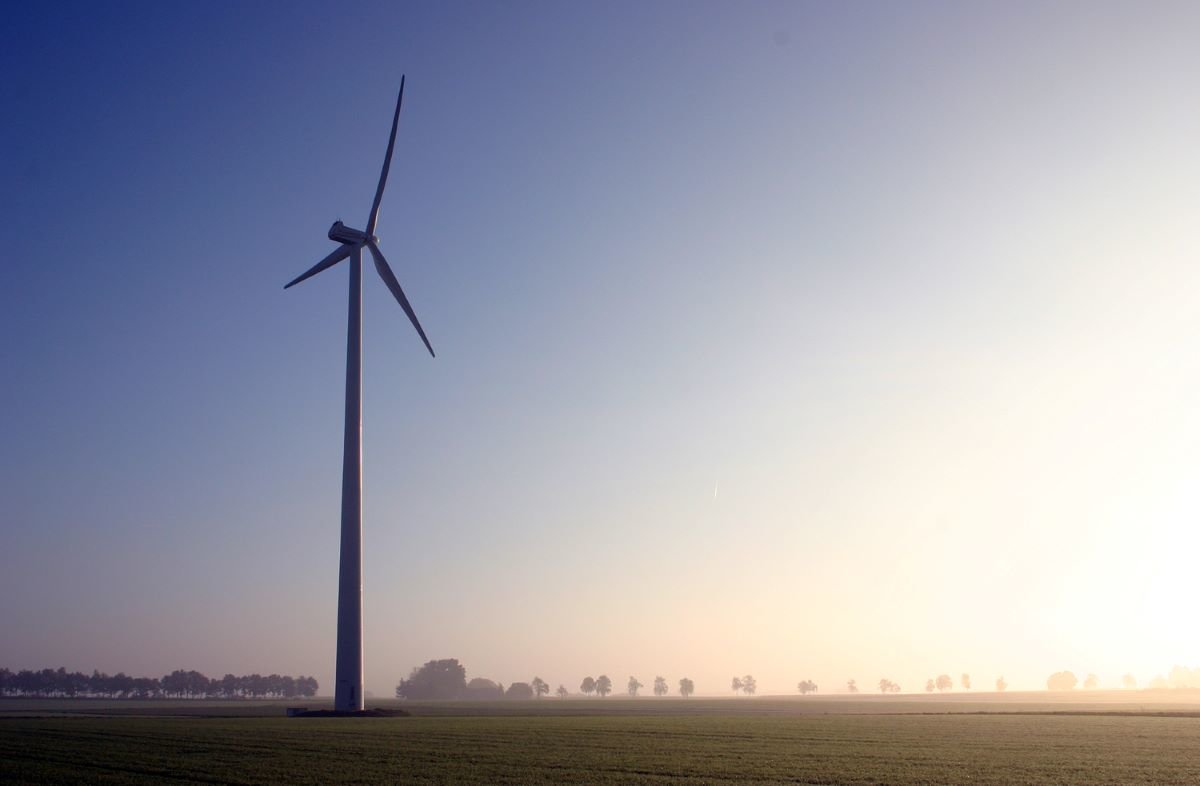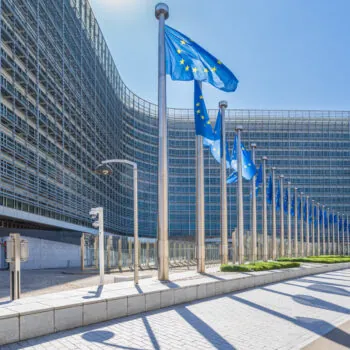- On 14 July, the European Commission will release its first batch of legislative Fit for 55 proposals to reduce the EU’s greenhouse gas emissions by 55% below 1990 levels by 2030. It will be complemented by additional proposals by the end of the year, and fiercely negotiated over the next 2-3 years before it becomes law.
- Will it deliver on the bloc’s ambitions? Will it convince? And will it have a positive global impact?
The context
The EU’s political leaders have confirmed their commitment to the vision of a “European Green Deal” i.e. transitioning to a fully climate neutral, sustainable, and fair Europe, on several occasions. It is seen as the EU’s best chance to provide a brighter future to Europeans and boost Europe’s competitiveness. There is overwhelming backing from citizens on this, with almost 8 out of 10 Europeans agreeing that taking action on climate will make European companies more competitive, and over seven in ten Europeans agreeing that the cost of damages due to climate change are much higher than the investments needed for a green transition.
The overall framework is already agreed – the EU is legally bound to reach climate neutrality by 2050 and to reduce GHG emissions by 55% below 1990 levels by 2030. There is no global blueprint on how to achieve this. The EU is now attempting to define it for itself, developing the tools and policies to deliver its ambition. On July 14 the European Commission will release a dozen legislative proposals enhancing flagship European climate, clean energy, and transport policies.
All of this comes during a “climate super year” where progress is expected on the international climate diplomacy track, and where the socio-economic context and the recovery efforts amp the stakes on any decision taken.
What to look out for in the Fit for 55 proposals?
There is a lot riding on this package. A deep analysis of the thousands of pages of proposals will take weeks, and the negotiations between European Parliament and national government years. Here are a few elements that will help assess whether this package is good for climate, and therefore good for Europe.
1 – Will it be consistent with the EU’s 2030 and 2050 climate commitments?
The overall ambition, consistency, and environmental integrity of the proposals will be crucial for the EU’s credibility towards Europeans and international partners, and to drive investment through clear unequivocal signals. Key ingredients to achieve this:
- New updated targets as part of the EU emissions trading scheme (ETS), ‘effort sharing’ regulation, renewable energy, energy efficiency, and land-use proposals set conditions to go beyond 55% emission reductions by 2030.
- Reform of energy taxation leads to the phase out of hidden subsidies for fossil fuels.
- The exclusion of short-sighted solutions such as new investments in gas infrastructure and hydrogen blending, as this would increase the costs of the transition and delay progress towards climate neutrality (RED, EED, Q4 gas package).
2 – Will it set the conditions to deliver concrete emission cuts in all sectors and create real incentives to develop green competitive markets?
The Fit for 55 package is the EU’s starter gun for the sustainable economic transformation of all sectors, across the EU. It must take emitting sectors onto a credible pathway to climate neutrality, accelerate the uptake of innovative solutions, and give European businesses a first mover advantage on future global green markets. Key elements here:
- The balance of carbon pricing and regulation across the board (ETS, ESR, CO2 in cars, EED, upcoming EPBD, etc.). While the ETS is an effective tool in driving incremental innovation and accelerating the phase out of outdated technologies in the power sector, regulation is more effective in restructuring and supporting the creation of new markets.
- The balance of “give and take” for European heavy industry. Additional protection in the form of a carbon border adjustment mechanism (CBAM) and new financial incentives (ETS Innovation Fund) should be balanced with a strong ask from industry in return, through reducing free allowances and indirect cost compensation.
- Clarity around the trajectory for decreasing the EU’s reliance on fossil fuel-based energy notably by anticipating a coal phase out date of 2030 and setting a trajectory for a decline of EU gas demand by 50% below 2019 levels by 2030 (overall presentation, ETS, RED, EED).
3 – Will it convince and reassure enough to be adopted and implemented?
Despite a brightening economic outlook for all European countries, the Fit for 55 package must address serious questions about its social impacts and its ability to unearth opportunities across all member states. Key ingredients include:
- Evidence of solidarity between member states, notably regarding the contribution of different member states to the EU’s climate target (ESR) as well as dedicated instruments to help the CEE region catch up (across the board).
- Tools and mechanisms to anticipate and proactively manage the social impacts of the transition. This would include just transition measures to ensure a managed transition for all high carbon regions and sectors beyond coal, and specific safeguards to manage the impacts on housing affordability of new measures (Climate Action Social Facility, and across the board).
- Indication of a fair distribution of costs and benefits between households and industry (ETS, energy taxation directive).
4 – Will it have a positive impact internationally?
The Fit for 55 package could be received internationally as a positive, even best practice, example of underpinning climate targets with legislation to drive implementation. Alternatively, the international reaction could be dominated by concerns over CBAM which would affect the EU’s global standing and trade relationships. Key factors include:
- The ambition and environmental integrity of the package, contributing to maintaining or even boosting the EU’s credibility.
- An international engagement strategy that goes beyond CBAM and provides clarity to international partners of the consequences of the package for them (e.g. decreasing gas demand from exporter countries).
- The inclusion of a support offer to accelerate industrial transition in EU Neighbourhood and African countries most likely to be affected in the CBAM proposals.
Background information
Proposals expected on July 14th. The Commission will issue a dozen legislative proposals – likely including four new legislations – covering climate, clean energy, and transport. Find the full list here.
Next steps in the negotiations. This is the starting point of heated negotiations during which national governments and European politicians are likely to diverge on options for implementation, despite overall alignment on overall objectives. Slovenia, France, Czechia, Sweden, and possibly Spain will oversee lengthy 2 or 3-year negotiations as presidents of the Council of the EU.
Also to watch out for. The July 14th release is one part of a wider wave of at least 20 legislative proposals aimed at delivering the European Green Deal over the next couple of years. Other relevant elements include…
- Sustainable Finance. Following the July 6 New Sustainable Finance Strategy, the Commission will consider the inclusion of gas and nuclear in the taxonomy in the autumn (Taxonomy agriculture and other energy sources expected for September or October).
- Fit for 55, take 2. Expected in December, it will focus on decarbonising the gas sector and buildings.
- Circular economy package. Also expected in December, it will focus on heavy industry and products through Sustainable Products, Ecodesign, and Industrial Emissions Directives.
- The Commission is set to align state aid rules with the European Green Deal, notably through the adoption of new Climate, Energy, and Environmental Protection Guidelines in Q4 this year.
Available for comment on Fit for 55
E3G experts are available for commentary – please contact them directly.
|
Name |
Expertise |
Contact details |
|
Lucie Mattera |
Overall Fit for 55 assessment & politics |
m: +32 (0)489 00 44 76, lucie.mattera@e3g.org |
|
Manon Dufour |
Overall Fit for 55 assessment & politics |
m: +32 (0)4 77 76 78 01, manon.dufour@e3g.org |
|
Brick Medak |
Germany |
m: +49 (0) 151 22 88 9448, brick.medak@e3g.org |
|
Johanna Lehne |
CBAM, ETS, Industry |
m: +44 (0) 770 848 6383, johanna.lehne@e3g.org |
|
Raphael Hanoteaux |
Gas, Hydrogen, and Renewables |
m: +32 496 205 903 raphael.hanoteaux.@e3g.org |
|
Adeline Rochet |
EE, buildings renovation, heating |
m: +32 (0) 470 118 580 adeline.rochet@e3g.org |
|
Rebekka Popp |
Coal, just transition |
m: +49 (0) 175 8344 554 |
|
Jennifer Tollmann |
COP26, geopolitics |
m: +49 (0)151 7301 9723, jennifer.tollmann@e3g.org |
Follow E3G on Twitter at @E3G for live updates and reactions on July 14th.


